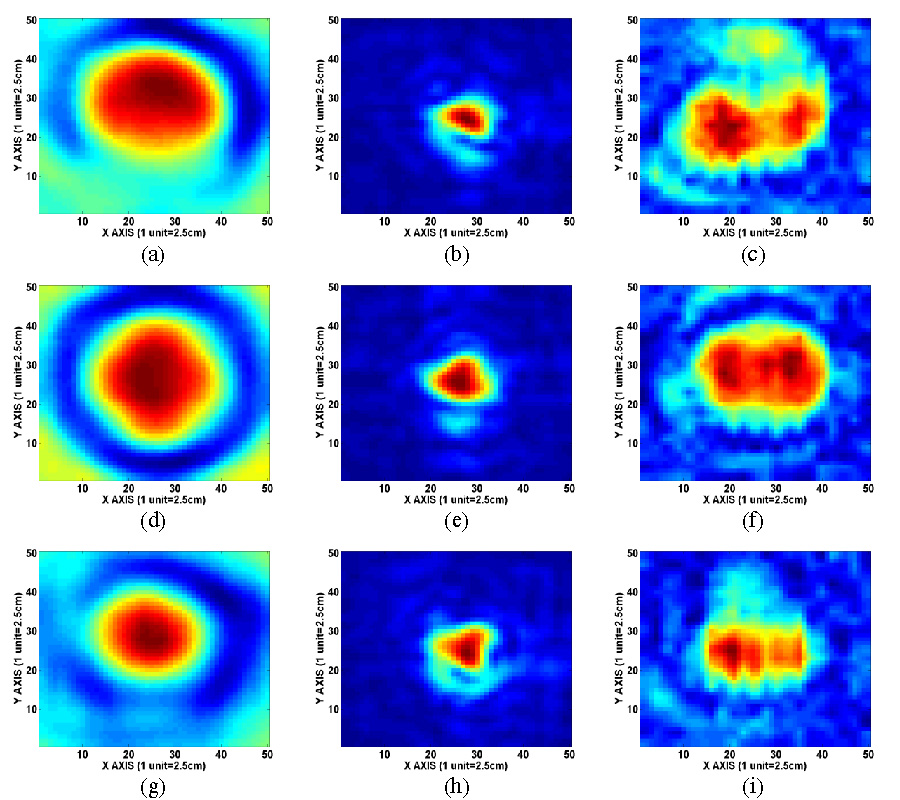Analysis of the Imaging Algorithms for Shape Detection and Shape Identification of a Target Using through
-the-Wall Imaging System
Akhilendra Pratap Singh
,
Smrity Dwivedi
and
Pradip Kumar Jain
Through-the-Wall Imaging systems are a promising method for on-line applications,especially in disaster areas, where victims are buried under collapsed walls. These applications require such systems to identify the shape of thetarget. The foremost step while performing the task of shape recognition of stationary targets behind a wall is to first detect the target position, its approximate shape and size, and then, subsequent processing of these images with the use of signal processing techniques for the shape recognition of targets. For determining highly accurate information about target location and its approximate shape, a high-resolution image of the target is required. In literature, various imaging algorithms have been reported, some of which are back projection, delay sum, and frequency-wavenumber imaging algorithm. However, the use of these algorithms for shape detection of the target has not been explored so far. Therefore, it becomes essential to explore the use of these algorithms on TWI data to select an effective imaging algorithm for detecting approximate shape and size of the target. For this purpose, an experiment has been performed. The performances of these imaging algorithms have been analyzed and evaluated. The detected target images do not correspond to the actual shape and size of targets; therefore, a novel methodology using an artificial neural network has been presented for predicting the actual shape of the target. From the experimental data, the retrieved result of shape has been found in good agreement with the target original shape.









